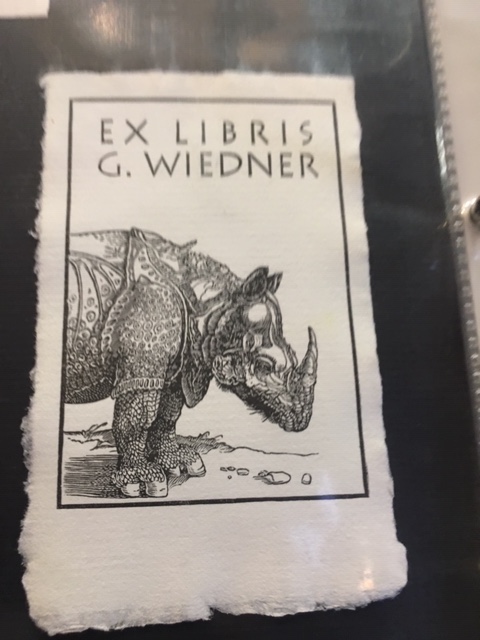Traditionally, bookplates consist of small, personalized artwork that are pasted into books as marks of ownership. They are usually placed on the endpaper. As stated by the Princeton Architectural Press and shown online at the Literary Hub website, “A bookplate is sometimes called an ex libris in reference to the Latin inscription meaning ‘from the books of’ found on most examples. The earliest known example, dated to 1480, is the bookplate of Hilprand Brandenburg, a Carthusian monk.”
Here at Bookplate Ink, we print many personalized bookplates by adding names to our own designs, most of which originated with Antioch Bookplate Company. But we also print numerous bookplates with custom artwork that customers submit. These designs often have very personal elements and meaning. We asked a few customers about their bookplate artwork and found the answers very interesting.
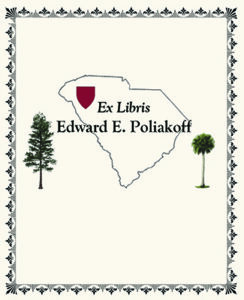 Ed Poliakoff, a Columbia, South Carolina, attorney whose hobbies include collecting antique South Carolina maps and stewarding family artifacts, writes about his bookplate as follows: “My bookplate, composed in a few iterations with Karen Gardner’s patient assistance, has several personal design elements, including my home state’s outline and palmetto state tree; a crest that is colored and shaped to invoke my undergraduate college and placed on the area of my hometown; a loblolly pine to represent the trees around my childhood home; a stylized border to invoke some of my favorite 19th century South Carolina maps; and with space above and below the images for placement of labels identifying the maps, books and other objects to which the bookplates are attached.
Ed Poliakoff, a Columbia, South Carolina, attorney whose hobbies include collecting antique South Carolina maps and stewarding family artifacts, writes about his bookplate as follows: “My bookplate, composed in a few iterations with Karen Gardner’s patient assistance, has several personal design elements, including my home state’s outline and palmetto state tree; a crest that is colored and shaped to invoke my undergraduate college and placed on the area of my hometown; a loblolly pine to represent the trees around my childhood home; a stylized border to invoke some of my favorite 19th century South Carolina maps; and with space above and below the images for placement of labels identifying the maps, books and other objects to which the bookplates are attached.
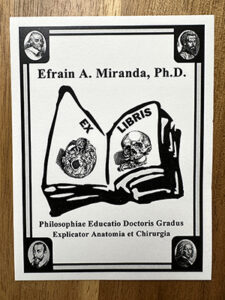 Dr. Efrain Miranda, the CEO of Clinical Anatomy Associates, Inc. and devoted bibliophile, wrote about his bookplates in the blog “A Moment in History.”: “My bookplate, also known as an Ex-Libris, is a design based on images by Andreas Vesalius. It also contains the portraits of four famous anatomists: William Harvey, Andreas Vesalius, Adrian Van Der Spigelius, and Bernhard Siegfried Albinus, all of them highlighted in our blog “A Moment in History”. The bookplate was printed by Bookplate Ink, a USA-based company. They are self-adhesive, acid-free, and very high quality paper. I strongly support and recommend them.” There are several fascinating posts on the blog about books and bookplates, including https://clinicalanatomy.com/mtd/842-interesting-discovery-in-an-ex-libris.
Dr. Efrain Miranda, the CEO of Clinical Anatomy Associates, Inc. and devoted bibliophile, wrote about his bookplates in the blog “A Moment in History.”: “My bookplate, also known as an Ex-Libris, is a design based on images by Andreas Vesalius. It also contains the portraits of four famous anatomists: William Harvey, Andreas Vesalius, Adrian Van Der Spigelius, and Bernhard Siegfried Albinus, all of them highlighted in our blog “A Moment in History”. The bookplate was printed by Bookplate Ink, a USA-based company. They are self-adhesive, acid-free, and very high quality paper. I strongly support and recommend them.” There are several fascinating posts on the blog about books and bookplates, including https://clinicalanatomy.com/mtd/842-interesting-discovery-in-an-ex-libris.
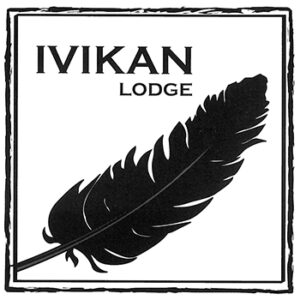 We have printed the elegant, square-shaped bookplate shown on the left several times over the years to be placed in the books at Bill and Marcia Levy’s library.
We have printed the elegant, square-shaped bookplate shown on the left several times over the years to be placed in the books at Bill and Marcia Levy’s library.
Marcia wrote: “The plate was designed by our daughter, the ceramicist Rachel Levy, who was influenced by the feather etched on the sign of our main lodge on our ranch in western Colorado. The sign’s design graphic with hanging feather was done in the 1980s by Nick Zarkades of Seattle, Washington. We LOVE our bookplates.”
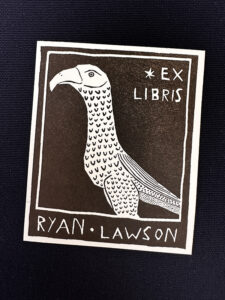 Ryan Lawson, an interior designer, had his custom design printed with us by letterpress. This striking design by German artist David Schmitt, has a lot of personal meaning for Ryan. In his own words: “I’ve always loved falcons and the art of falconry — my grandmother taught me all about birds of prey when I was younger. And, ever since I moved to NYC in 2004, when I visit the Metropolitan Museum, my first stop is this incredible sculpture. And, so I thought it would be a good idea to base my bookplates on that piece.”
Ryan Lawson, an interior designer, had his custom design printed with us by letterpress. This striking design by German artist David Schmitt, has a lot of personal meaning for Ryan. In his own words: “I’ve always loved falcons and the art of falconry — my grandmother taught me all about birds of prey when I was younger. And, ever since I moved to NYC in 2004, when I visit the Metropolitan Museum, my first stop is this incredible sculpture. And, so I thought it would be a good idea to base my bookplates on that piece.”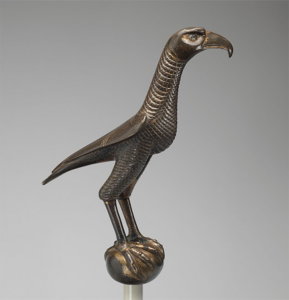
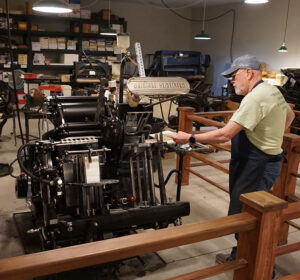 Years ago, our bookplates were exclusively printed on a Heidelberg rotary press as seen in the accompanying image. Regrettably, our press malfunctioned and we lost our printer within the same month, compelling us to discontinue this production method. However, we are excited to announce a new partnership with
Years ago, our bookplates were exclusively printed on a Heidelberg rotary press as seen in the accompanying image. Regrettably, our press malfunctioned and we lost our printer within the same month, compelling us to discontinue this production method. However, we are excited to announce a new partnership with 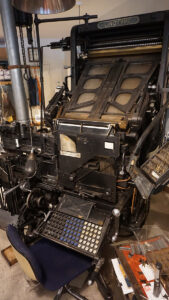
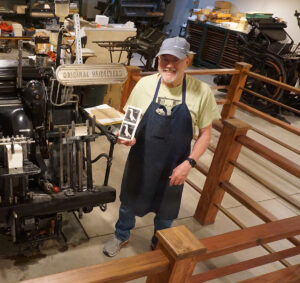
 More than a year and a half ago — which now seems in the distant past — we had an order requested for bookplates for a wonderful and loving project: a book area for children at the Child Study of Center of Yale School of Medicine, in honor of the beloved Director of Finance and Administration there, Karen Muth, who was losing her long battle with cancer. Karen was able to help choose the design she wanted before she passed. As her friend Jean Herzog, who placed the order, wrote, “books will be chosen by the faculty and staff for children and families who are dealing with childhood cancer. Karen dealt with her own cancer for more than eight years and was very touched that her friends and family chose to remember her this way.”
More than a year and a half ago — which now seems in the distant past — we had an order requested for bookplates for a wonderful and loving project: a book area for children at the Child Study of Center of Yale School of Medicine, in honor of the beloved Director of Finance and Administration there, Karen Muth, who was losing her long battle with cancer. Karen was able to help choose the design she wanted before she passed. As her friend Jean Herzog, who placed the order, wrote, “books will be chosen by the faculty and staff for children and families who are dealing with childhood cancer. Karen dealt with her own cancer for more than eight years and was very touched that her friends and family chose to remember her this way.”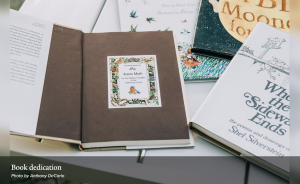
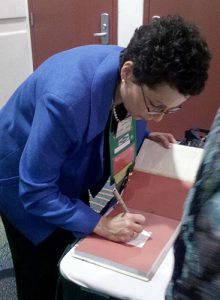 Authors have had to cancel book tours and signings since the pandemic occurred. And, of course, libraries and bookstores are closed, so books are being purchased online.
Authors have had to cancel book tours and signings since the pandemic occurred. And, of course, libraries and bookstores are closed, so books are being purchased online. While in-person signings have now been canceled, more and more authors and publishers are using bookplates to continue to stay in touch with their readers. We have had several orders from loyal customer
While in-person signings have now been canceled, more and more authors and publishers are using bookplates to continue to stay in touch with their readers. We have had several orders from loyal customer  New York Times Bestselling author and former U.S. Navy Seal Jack Carr, who wrote Savage Son, True Believer and The Terminal List, recently re-ordered bookplates for True Believer.
New York Times Bestselling author and former U.S. Navy Seal Jack Carr, who wrote Savage Son, True Believer and The Terminal List, recently re-ordered bookplates for True Believer. 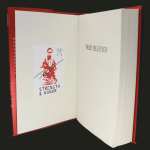 He sells the signed bookplates on his website at
He sells the signed bookplates on his website at 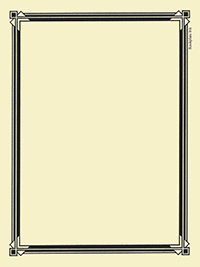
 Recently, I had the pleasure of visiting Basel, Switzerland. Basel is a beautiful city on the banks of the Rhine, with houses and buildings dating back to the 1600s. There are many museums there, including art museums, a toy museum, a caricature and cartoon museum, and a music museum.
Recently, I had the pleasure of visiting Basel, Switzerland. Basel is a beautiful city on the banks of the Rhine, with houses and buildings dating back to the 1600s. There are many museums there, including art museums, a toy museum, a caricature and cartoon museum, and a music museum. 
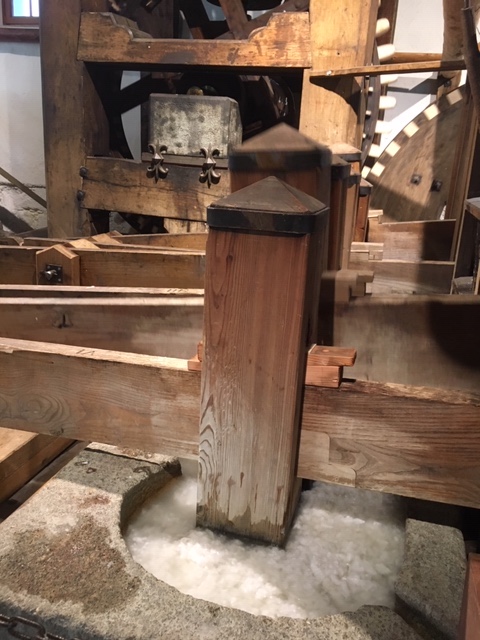 On the first floor, visitors are able to not only view paper being made, but try their hand at it also. The photo on the left shows a mixture of pulp and water being mashed together while the one on the right shows the back end of the machinery.
On the first floor, visitors are able to not only view paper being made, but try their hand at it also. The photo on the left shows a mixture of pulp and water being mashed together while the one on the right shows the back end of the machinery. 
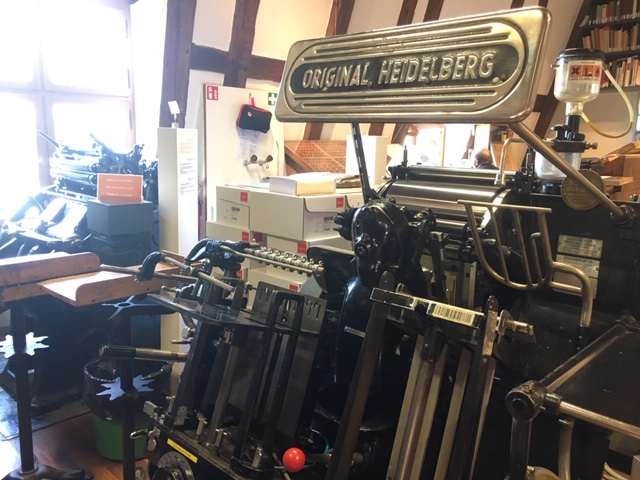 And, of course, it was thrilling to find bookplates amongst the print samples in the shop, The bookplate shown below is one I’d seen online.
And, of course, it was thrilling to find bookplates amongst the print samples in the shop, The bookplate shown below is one I’d seen online. 